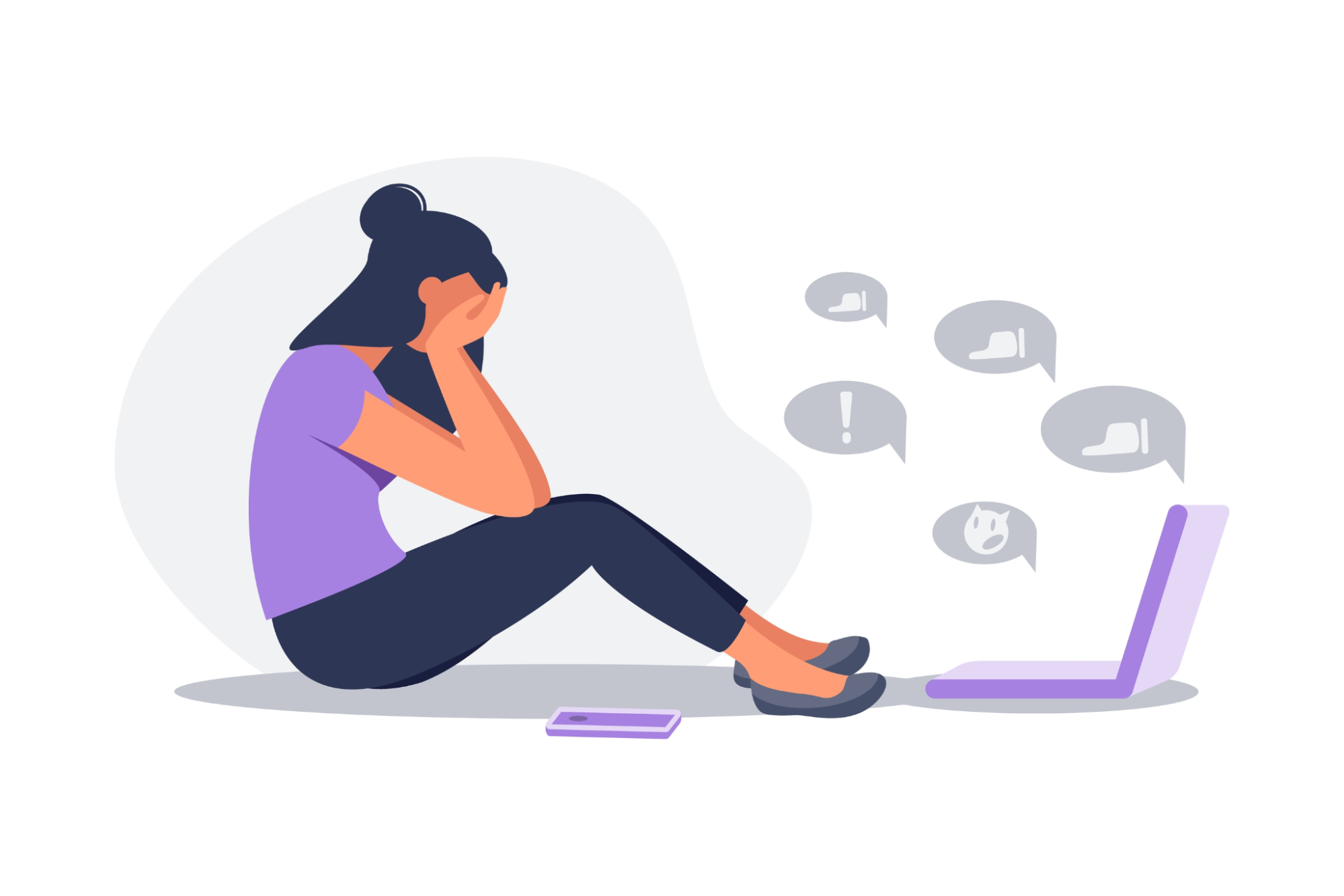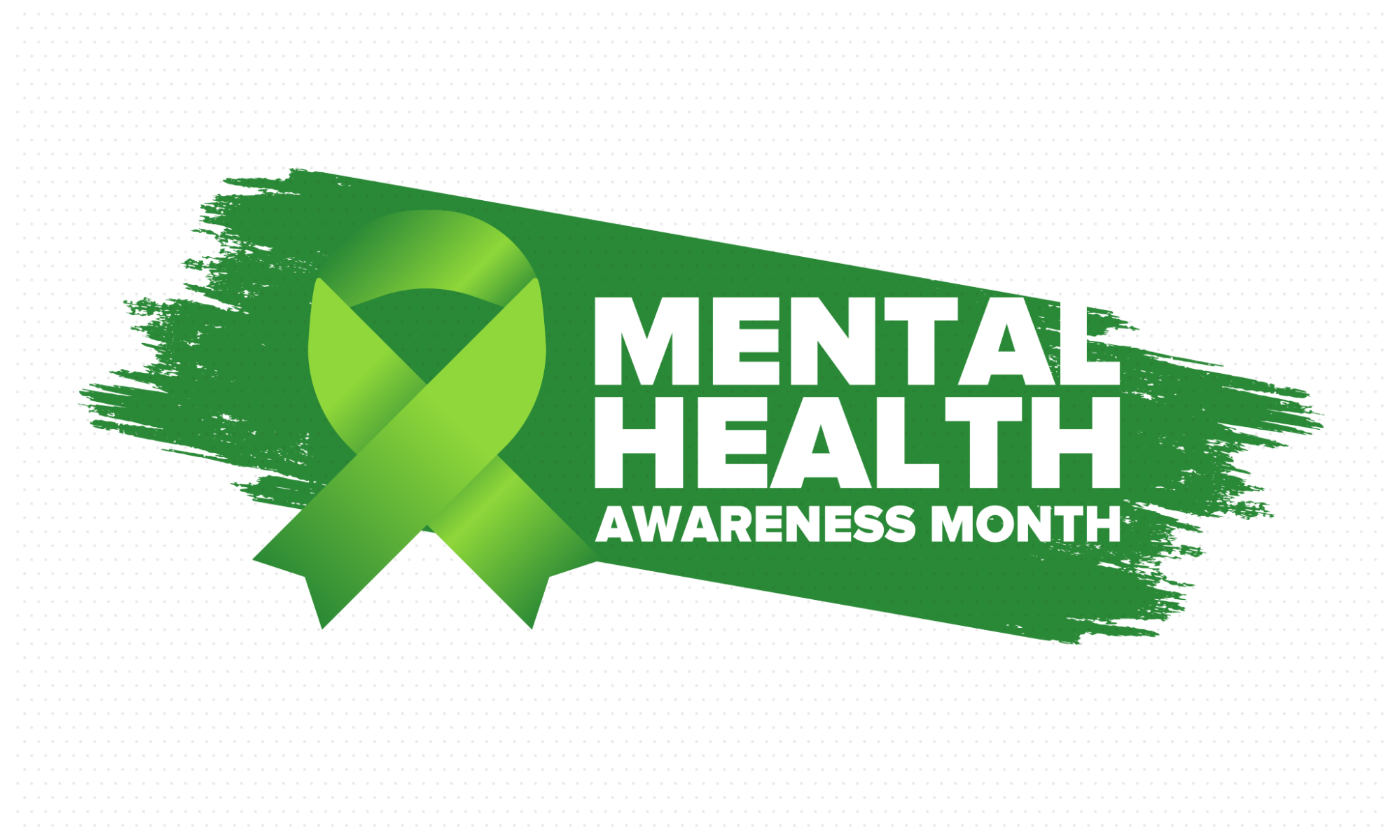Bullying has always been a problem and technology has only made it worse. Cyberbullying, the digital version of traditional bullying, is on the rise despite our best efforts to curb it. It’s becoming more vicious, farther-reaching, and relentless, thanks to the internet’s ubiquitous nature, digital anonymity, and an always-on culture. Victims get no respite as their bullies virtually follow them everywhere.
Our digital experiences influence our mental and emotional health just as much as real-world events do. This Mental Health Awareness Month, let’s learn how we can identify and combat all the different forms of cyberbullying, individually and collectively, to protect ourselves and our loved ones.
What is Cyberbullying?
Cyberbullying is the use of digital technologies like social media, mobile phones, online forums, and gaming communities to threaten, harass, or target someone. Cyberbullying is persistent, malicious behavior, and the perpetrators may:
-
-
-
-
- Send threatening, abusive, sexual, or derogatory remarks, privately or publicly.
- Spread humiliating rumors or personal information, photos, or videos.
- Impersonate someone with the intent to ruin their reputation.
-
-
-
Although it’s most common among adolescents and teens, anyone can be a victim of cyberbullying.
What are the Different Forms of Cyberbullying
Cyberbullying can occur in many ways, including:
- Exclusion: To deliberately exclude someone from online conversations, groups, and activities to make them feel left out.
- Trolling: To post ridiculing or offensive comments to provoke or insult someone. It’s typically a collective form of cyberbullying, and trolls may not even know the victim personally.
- Cyberstalking or cyber harassment: Includes monitoring victims online, making false accusations, and/or sending threatening messages to frighten them.
- Outing/Doxing: To reveal or threaten to reveal personal or sensitive information about someone, including private conversations, photos, and videos, in order to humiliate, blackmail, and/or extort them.
- Fraping: To access someone else’s account without permission, usually through unattended devices, to make inappropriate posts or conversations on their behalf.
- Masquerading: To create fake accounts specifically to bully someone. Usually, cyberbullies masquerade or pretend to be someone the victim knows really well.
- Griefing: To bully someone through online gaming platforms.
How Cyberbullying Affects Mental Health

Cyberbullying can affect victims mentally, emotionally, and even physically. Victims can experience:
-
- 🚧 Loneliness: Cyberbullying can make you feel small, humiliated, and powerless. That’s why victims may find it difficult to open up to friends and family about cyberbullying.
- 🚧 Anxiety and Depression: Cyberbullying exacerbates underlying mental health issues like anxiety and depression. Even without any predisposition to these conditions, you can still experience classic symptoms of anxiety and depression, like loss of appetite, nausea, sleeping disorders, lack of motivation., etc. In extreme cases, cyberbullying can also lead to PTSD.
- 🚧 Low self-esteem: Cyberbullies can make you feel inadequate and excluded. It can lower your self-esteem, leading you to recoil and withdraw from your social life and activities that you used to enjoy.
- 🚧 Aggression: The fear, stress, and anxiety from cyberbullying can sometimes manifest as aggression. You may feel powerless in front of your bullies and take it out on others. This creates a vicious cycle of bullying. Remember, cyberbullying itself may also stem from underlying mental health struggles.
- 🚧 Physical health issues: Your mental health and well-being influence your physical health. Physical health problems like nausea, headaches, and gastrointestinal problems are also well-documented in cyberbullying victims.
- 🚧 Self-injurious tendencies: Intense cyberbullying can make you spiral down your own negative thoughts. The constant mental load and self-blame can get overwhelming to the point of complete mental breakdown. It may lead to suicidal thoughts and self-harm. In the past, victims have committed suicide following ruthless cyberbullying.
Don’t rely on internet resources alone for mental health advice. If you or someone you know is having suicidal thoughts, call National Suicide Prevention Lifeline at 1-800-273-TALK (8255) to talk to a skilled, trained counselor. Call 911 if you suspect immediate danger. If you are located outside the US, immediately call your local emergency line (or dedicated emergency number for mental health problems).
The effects of cyberbullying can stay with you long after the bullying has stopped. That’s why it’s important to address cyberbullying and the resulting mental health issues as soon as possible and appropriately.
Cyberbullying and Its Effects Are Real

Switching off your computer or smartphone won’t end the effects of cyberbullying. You’re not too sensitive or overly dramatic, and you certainly don’t deserve it. Mental health advice available on the internet is often misleading, counterproductive, and even dangerous. As a victim, your feelings, experiences, and concerns are valid, and your mental health is important.
Cyberbullying impacts victims differently based on their pre-existing mental health conditions, family support, social and financial circumstances, and the coping mechanisms they resort to. It also depends on the medium, form, and intensity of cyberbullying. As a victim, only you can determine how cyberbullying impacts you.
Online forums and platforms are full of insensitive trolls and toxic opinions that can make you feel worse. Never seek mental health advice off the internet. If you’re struggling with mental health in one or more ways, seek professional help right away. Get advice from a mental health professional before you make any serious decisions.
What is Mental Health Awareness Month?
May is Mental Health Awareness Month in the US. The Mental Health America organization started observing Mental Health Awareness Month annually to raise awareness about mental health and reduce mental illness stigma. Each year, the organization sets a unique theme. It organizes events to start a conversation and assembles resources to educate people about the theme and mental health in general.

This year’s theme is Back to Basics. The goal is to educate everyone about mental health issues, their causes, and how to address them. Cyberbullying often goes unnoticed, while its victims suffer from the mental health effects in silence.
As a society, we need to educate ourselves about cyberbullying and its various forms. That’s the only way we can identify instances of cyberbullying – and respond adequately and in time to minimize the effects and intensity of cyberbullying.
How to Identify Cyberbullying
Am I a victim of cyberbullying?
There’s a fine line between light-hearted teasing and bullying. Sometimes, it can be difficult to tell them apart, both in real life and online. Fun at your expense is unacceptable in any case. Speak up if something hurts your feelings or makes you uncomfortable.
Friends and well-meaning peers will acknowledge your feelings and won’t put you in a similar predicament again. Cyberbullying, on the other hand, is persistent and ill-intentioned. Cyberbullies will undermine your experience and invalidate your feelings. Confronting or responding may even worsen the situation and make bullies more aggressive. If that happens, seek help and report them.
How to tell if someone is suffering from cyberbullying?
Victims of cyberbullying often suffer in silence. Always keep an eye on inexplicable behavioral changes in your loved ones, as they can be signs of ongoing cyberbullying. You may notice your friend, peer, or family member:
-
- ☐ Becomes quieter, distant, and isolated.
- ☐ Remains distracted at school or work.
- ☐ Withdraws from favorite activities.
- ☐ Experiences eating or sleeping disorders.
- ☐ Has unexplained, frequent mood changes.
- ☐ Shows signs of aggression unexpectedly.
- ☐ Avoids school, college, or work.
- ☐ Spends significantly more or less time online.
- ☐ Becomes tense and anxious when using their phone or computer.
These can also indicate underlying mental health struggles, if not cyberbullying.
How to Address Cyberbullying
If you are a victim of cyberbullying:
-
- 👉 Don’t engage with cyberbullies. Emotional responses feed cyberbullying.
- 👉 Confide in someone you trust. Loneliness and isolation can exacerbate the mental health effects of cyberbullying.
- 👉 Document the proof. Keep a record of texts, posts, comments, audio, and videos that can serve as proof of cyberbullying.
- 👉 Inform your school’s administration or your employer. Most institutions and workplaces have policies against cyberbullying. They may even offer resources to help you cope.
- 👉 Block cyberbullies and report them online. All mainstream social media platforms and online games have anti-cyberbullying policies.
- 👉 Involve the authorities. Contact the police or emergency services in your area if you feel unsafe. Authorities can identify anonymous cyberbullies, too.
- 👉 Seek professional medical help. Consult a mental health expert for any mental struggles, even if you’re not having self-harming or suicidal thoughts.
- 👉 Take a break. Log off your social media accounts. Switch off your phone. Take a break from the digital world, if you can, to de-stress and focus on your mental health.
If you are a witness of cyberbullying:
-
- 🚑 Offer support. Try to listen to the victim’s struggles, show sympathy, and offer them emotional support. Don’t judge them.
- 🚑 Guide the victim. Try to educate them on coping with and addressing cyberbullying, as mentioned in the previous section. Share resources such as counseling and support services, especially with young victims.
- 🚑 Take the initiative. Intervene directly if you have authority over the perpetrator. Otherwise, inform an authority figure like your employer or school administration (if you’re a student) of ongoing cyberbullying.
- 🚑 Don’t become a part of cyberbullying. Online trolling is a form of cyberbullying. Don’t become a part of it just because everyone else is doing it. Stand with the victims instead, and report such incidents to website administrators.
If you are a parent or a guardian:
-
- 🤝 Build trust. Let your kids know that you love them unconditionally, and that nothing will change that. They should be able to trust you and approach you if they get into trouble without the fear of being judged or getting rebuked. Educate teens about cyberbullying and how to stay safe online.
Anti-Cyberbullying Laws

Cyberbullying laws don’t exist everywhere, but most states have amended existing bullying and electronic harassment laws to address and punish cyberbullying.
Depending on the situation and jurisdiction, cyberbullying can also be approached under existing criminal laws concerning harassment, defamatory libel, and/or publishing intimate pictures without consent.
Legislation on cyberbullying is far from perfect, but victims can seek protection and remedies from civil and criminal courts in most places. You may have to check with an attorney to learn about relevant laws in your area.
Many states hold schools and workplaces responsible for curbing and dealing with cyberbullying. The law might require your school, college, or workplace to investigate cyberbullying and offer support.
How to Prevent Cyberbullying
It’s impossible to eliminate cyberbullying because perpetrators feel they can leverage the internet’s anonymity to bully with impunity. You can educate yourself and others about cyberbullying and take necessary precautions to reduce the likelihood of you or your loved ones experiencing cyberbullying.
Here’s what all of us should do collectively to make the internet a safer place for everyone:
1. Start a conversation.
Learn about cyberbullying and its different forms. The more you understand the tactics cyberbullies use, the earlier you can identify cyberbullying and take countermeasures. Share expert resources with others, especially young people around you.
2. Advocate for anti-cyberbullying policies.
Call for mental health counselors and cyberbullying awareness campaigns at your school or workplace.
3. Trust and build trust.
Cyberbullies usually target the vulnerable. Know who you can count on, and let your loved ones know you’ve got their back, always.
4. Use privacy settings.
Go through the privacy settings of all your social media accounts. Make sure you’re on top of them. Repeat for your family, especially kids, teens, and any non-tech savvy family members.
5. Don’t overshare.
Keep the details of your personal life private even if you have set strict privacy rules. The more you share the easier it is to cyberstalk you. Remember, cyberbullies are often people you know.
6. Secure your digital data.
Even strangers can hijack your connection to determine your location and monitor your online activities, especially on unsecured, public Wi-Fi networks. Hide your IP address and secure your digital data with a VPN.
Keep your digital data out of the hands of cyberbullies and other malicious users. Start your VPN journey risk-free with CyberGhost VPN’s 45-day money-back guarantee. At the very least, download CyberGhost’s free browser extension for some basic security and privacy features.
7. Use strong, unique passwords.
Use strong, complex, and unique passwords for all your accounts. Check out our guide to creating strong passwords every time. Better yet, use a password manager to organize and remember them, but never store them in plain text. Encourage others to do the same.
8. Disable default location sharing.
Never share your current location on social media. Make sure the pictures you share online don’t contain geotags. Manage location sharing settings on your device, and revoke all unnecessary permissions.
9. Log out of public computers.
Avoid using public devices when possible. If you absolutely must use one, rely on incognito/private browsing while doing so and remember to log out of all your accounts before leaving to prevent identity theft and fraping.
Remember, closing tabs or shutting down doesn’t automatically log you out.
10. Teach young people to use the internet responsibly.

Make sure younger family members know and follow the safety and privacy practices mentioned above. Befriend and follow them on social media. Monitor their activities, and inform them about it to build trust.
You can consult our internet safety guide for kids to get a full picture of cyber threats kids face and how you can protect them.
11. Identify and correct cyberbullies.
Most of the time, cyberbullies are just regular people like you and me. Cyberbullying often stems from unresolved trauma or underlying mental health issues.
If you know a cyberbully, try to approach them in a calm manner. Try to get them to figure out the reason behind their behavior and redirect them towards safe and healthy ways to deal with their emotions and struggles. Seek professional help if their behavior persists.
The Bottom Line
Cyberbullying has affected most of us in some way. Someone close to you may have experienced it if you haven’t. It’s our collective responsibility to identify and report cyberbullying.
In some cases, it may be too late by the time you catch cyberbullying, which is why prevention is key to avoiding the long-term and damaging mental health effects linked to cyberbullying.
Our real and digital worlds intertwine so thoroughly that it’s impossible to separate the two. Cyberbullies can gather information about you online to publicly humiliate you or physically harm you. That’s why it’s important to protect your digital privacy and follow cybersecurity best practices.
We’ve compiled many useful resources for you at CyberGhost Privacy Hub to help you safeguard your data and privacy. Here are a few you can explore as a starting point.
Feel free to share your experience with cyberbullying in the comments to remove the stigma and raise awareness. This Mental Health Awareness Month, let’s all band together to control cyberbullying and make victims feel heard and cared for.
FAQ
Cyberbullying is to threaten, harass, or target someone repeatedly using digital technologies like the internet, social media, and mobile phones. Unlike traditional bullying, cyberbullying can happen 24/7 and follows the victim everywhere.
Some forms of cyberbullying may involve unlawful or criminal behaviors. If you’re experiencing cyberbullying, save the evidence and report it to your school/workplace administration, website administrators, and law enforcement authorities.
Cyberbullying affects you physically, mentally, and emotionally. Mental effects of cyberbullying include isolation, anxiety, depression, low self-esteem, and aggression. In worst cases, victims may even take their own lives.
Never take medical or mental health advice from the internet. If cyberbullying is impacting your mental health, talk to a mental health expert right away.
You can reduce your likelihood of experiencing cyberbullying if you:
-
-
-
-
- Know the different tactics and forms of cyberbullying.
- Maintain digital privacy across social media and online forums.
- Follow internet safety best practices like using strong passwords and logging off of public devices.
- Identify and help cyberbullies reform and learn acceptable social behaviors.
-
-
-
Remember, cyberbullying isn’t 100% preventable no matter what precautions you take, and it’s never your fault.
Many educational institutes and workplaces have anti-cyberbullying policies and will take strong action against it if you report.
Some states already have civil and criminal laws to curb cyberbullying. Others have amended existing laws to include cyberbullying. In any case, institutional policies and state laws can help you get relief and security as well as hold cyberbullies accountable.



Leave a comment
L Paige
Posted on 19/05/2022 at 16:35
I need help with this issue. I have bee been targeted for two years now and have contacted the local police and they have done nothing to help. I have contacted the ftc, and banks because all of my accounts from Facebook to banking have been accessed and changed without consent. I have a lower credit score and all of my social media has been change and I have no other way to contact the people I know since moving away from everyone with this guy I have been with about two months before this all started. They have even put inappropriate photos of me on websites and created accounts on hook up apps/websites with my name and photos. Please I need help with this and have no clue where to go from here.
Ghostie
Posted on 27/05/2022 at 11:59
Hi, Paige.
We are sorry to hear about your situation.
If other people are creating accounts in your name on various social platforms, you can report these profiles and/or pages to platforms themselves. For Facebook, you can do so by filling out this form.
If your credit card has been charged without consent, you can reach out to your financial institution and report the transactions as fraudulent activity. In some instances, you may be able to reverse the transactions.
Wishing you all the best! Stay safe and secure.